South Dakota has a surprising range of things to find for the intrepid rockhound. From colored tourmaline to gem-quality carnelian, there’s a lot to be said for taking a look at the ground and seeing what turns up. If you do it in the right places you’ll end up with some awesome specimens for your collection!
So, let’s take a look at the rocks, minerals, and gemstones of South Dakota and see if there’s something you really want to take a look for.
Rocks and Minerals Found In South Dakota
1. Rose Quartz

Rose Quartz is the mineral of South Dakota, and the state contains some of the greatest places in the world to find it. Rose Quartz itself is a form of quartz crystal, but we often separate them for good reason. The vast majority of rose quartz is massive material, meaning that it’s formed of smaller interlocking crystals instead of being found as single crystals. Single crystals are sometimes found and are generally worth far more.
The other factor in this stone’s worth is the saturation of color it contains. Rarely you’ll find pieces that tinge into the red range, but a deep, satisfying pink is highly desirable. The best samples may also display asterism when cut en cabochon, the inclusions creating the same play of light known from star sapphires across the surface.
South Dakota has a lot of this mineral, and it’s known for producing high-quality samples. It’s also known for producing star rose quartz, which is a rarity in most locations. It’s a simple change in configuration that can boost the value of the stone a lot. Both aesthetically and financially.
If you’re looking to acquire some of the famous South Dakota rose quartz then your best bet is to head on out to Custer County. Here there are many mines and locations you’ll be able to find some of your own.
2. Selenite (Gypsum)
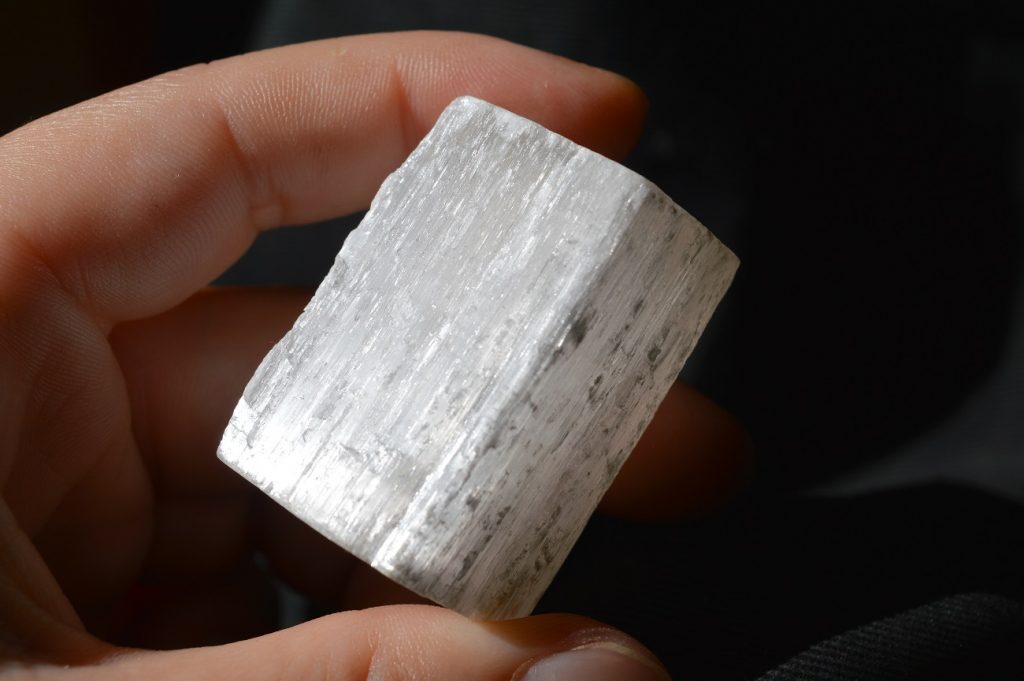
Selenite is a bit of an odd one, at least in my opinion. Having grown up near the Mojave I only knew gypsum as desert roses, which are sand included tabular crystals of gypsum that resemble roses if you squint hard enough. The other main form collected by rockhounds is selenite, which is a clear, well-formed mineral that often forms into large single crystals.
Selenite sometimes bears a bit of color, but it’s almost always a weak tint of blue or pink. Dyed specimens are fairly common, but don’t be fooled into thinking they’re natural. Selenite wands and crystals are a very common sight in rock shops around the country, and people love them because of the large, single crystals which are rarely found with other minerals. At least in a manner that leaves them affordable.
The selenite from South Dakota is a good example of the stuff. It’s clear, large enough to be remarkable, and can be found in decent amounts. Selenite is cool stuff, just remember that it’s also more common in many other parts of the country. I wouldn’t recommend a trip to South Dakota just to find a few crystals of it.
On the other hand, if you’re a local then you should check out the area around Piedmont. It’s known for hosting these crystals, while desert roses can be found in the area around Wagner.
3. Tourmaline
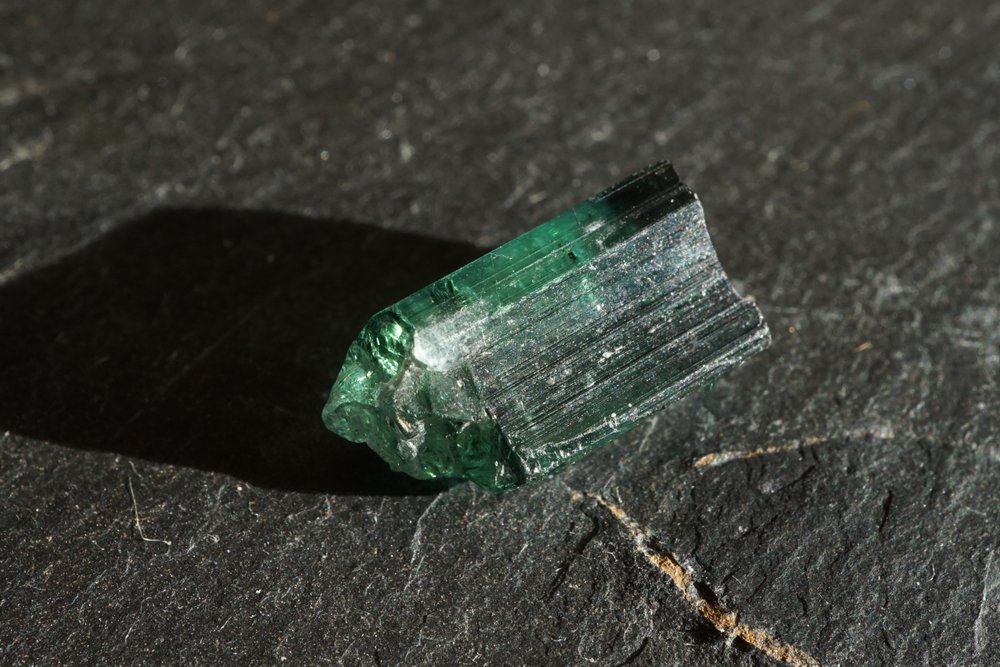
Tourmaline is one of the more famous crystals, both as a specimen and a gemstone. The majority of this mineral is opaque black color, this iron-laden form is called schorl and it makes up more than 90% of the tourmaline found. That said, I think that most rockhounds tend to associate it with watermelon tourmaline, which has color zoning between pink and green that can form distinct patterns.
Tourmaline is also known for the various gem-grade samples found. These include stones like rubellite and indicolite, both of which rival precious gemstones in color. Tourmaline is incredibly common in the mineral trade, whether it’s a $2 crystal of schorl or a $10,000 rubellite gemstone. Tourmaline gets around, and schorl is common wherever igneous stones are found.
South Dakota primarily bears schorl, like most locations. Green crystals are also found in some locations, along with blue and pink. These latter are rare but highly prized by collectors. Watermelon tourmaline is also found here. It’s a good variety, even if it doesn’t quite match the pegmatites of San Diego.
If you’re interested in seeking out tourmaline you’ll want to look in the Black Hills Region. Here the pegmatites bear a surprising variety of crystals, and it’s a good place for any rockhound to dig around a bit.
4. Agate/Jasper/Chalcedony
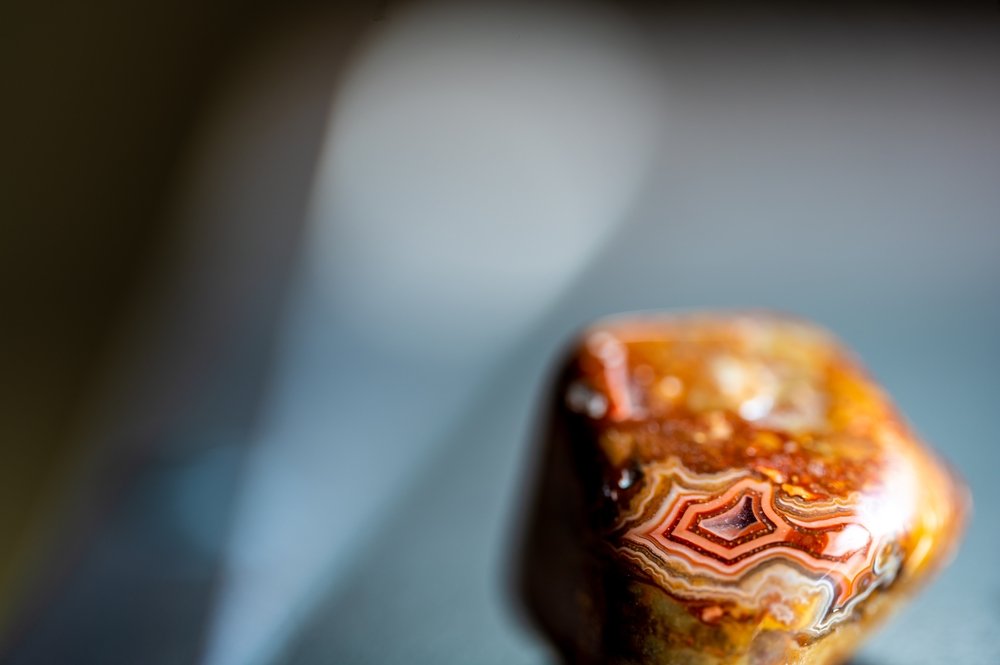
The various types of cryptocrystalline silica are a matter of much debate, mainly over what to call various types. Since South Dakota bears traditional samples of all three, there’s no real need to separate them. Among the varieties found in the state are Fairburn Agate, gem-quality blue chalcedony and carnelian, and some impressive red jaspers.
These minerals are all comprised of the same thing: silica. The specific type of crystallization here is a mixture of quartz and its polymorph moganite. These crystals grow together in microscopic formations, creating a mineral that appears glass-like to the casual onlooker. These crystals can only be viewed through thin sections with a powerful microscope. The structure even acts like glass, it’s able to be knapped in the same way as obsidian.
South Dakota has a surprising variety of these stones spread throughout the state. The ever-popular Fairburn agates are found here, but also great examples of blue chalcedony and carnelian. All of these can be quite valuable in the right place. Good examples of Fairburn agates fetch a great price, and the others are always in demand.
For those who are looking some can be found in almost all of the waterways of the state. Creek beds are the best places for agate, but you can also look in gravel pits, quarries, and anywhere else rocks build up.
5. Calcite
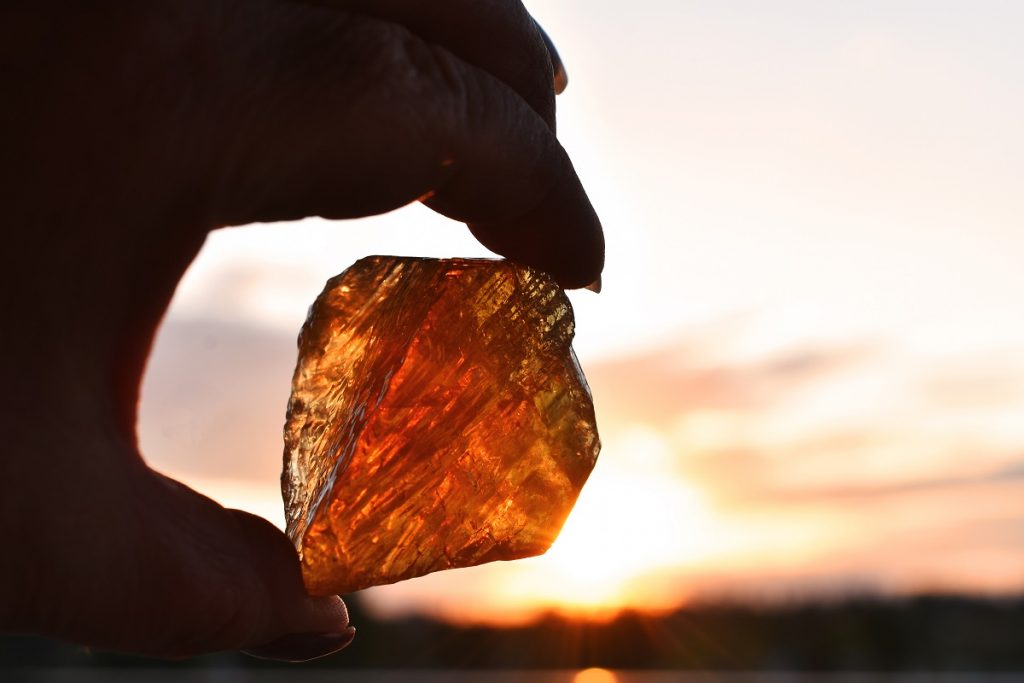
Calcite is a strange, and common, mineral. It forms into a wide variety of forms and even appears via biomineralization in the form of mollusk and egg shells. Calcium carbonate is one of the most common minerals around. Calcite often appears as a thin white film on other stones, but when conditions are right it can form into a variety of crystalline forms.
Calcite is known to form unique crystals in different habitats. There’s the uncommon dog tooth spar, for instance, which has a distinctive form that resembles teeth. You can find fluorescent crystals of calcite, and there seems to be an endless array of colors streaming in depending on the inclusions and local environment.
South Dakota has two main forms of interesting calcite. There are yellow crystals that display fluorescence under UV light, and a form unique to South Dakota known as sand calcite. Sand calcite forms in a way that the entire crystalline structure is filled with sand, leaving behind a crystal that appears to be formed entirely of grains of sand. It’s cool stuff, resembling sandstone at first glance until you get a closer look and realize it’s a single crystal.
If you’re looking for sand calcite in South Dakota, it’s usually found in the area around Rattlesnake Butte. The “standard” calcite is spread throughout the state, usually found as small crystals in the same areas you’d be hunting for other stones.
6. Beryl
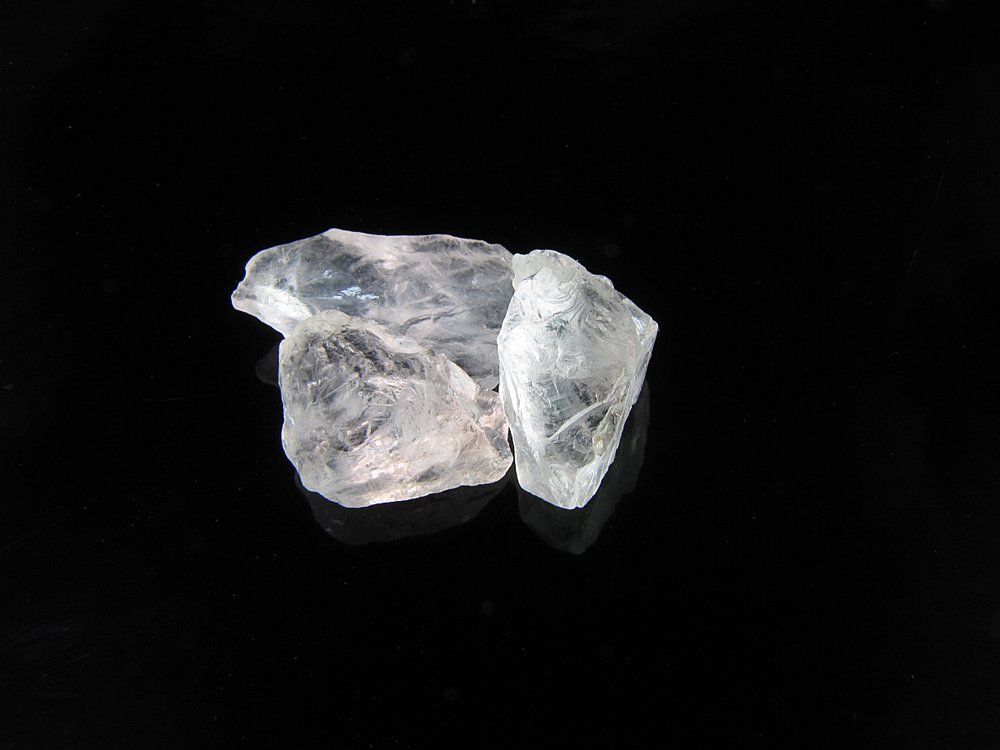
Beryl is one of those crystals that everyone knows without knowing. It occurs in the form of emerald, heliodor, morganite, and many other colored stones. As a whole, beryl is a common mineral when in a colorless form but it gets rare when we talk about strong colors. Beryl is very hard, scoring an 8.0 on the Moh’s scale of hardness which makes it suitable for all jewelry since it’s so hard to scratch or damage.
Beryl has a property I’ve always found odd: its clarity. While emeralds are known for their inclusions, the jardin to aficionados, other varieties are known for being clear. Aquamarine is a prime example, where all but the least gemmy examples are clear. Good aquamarine is often eye clean and sometimes clean in a loupe as well. It seems to have to do with the environments that the colors form.
Beryl found in South Dakota tends to be opaque and white. They’re less dull than they seem, however, since they also tend to be formed into distinctive octagonal crystals. This familiar form is found in many collections. I was unable to find any reports of precious beryl from the state, it’s primarily used for industrial extraction of the metal beryllium.
If you’re looking for beryl here you won’t be disappointed. It’s very common in the Black Hills region of South Dakota. There’s an incredible diversity of minerals in this area, and it’s well worth a trip.
7. Sphalerite
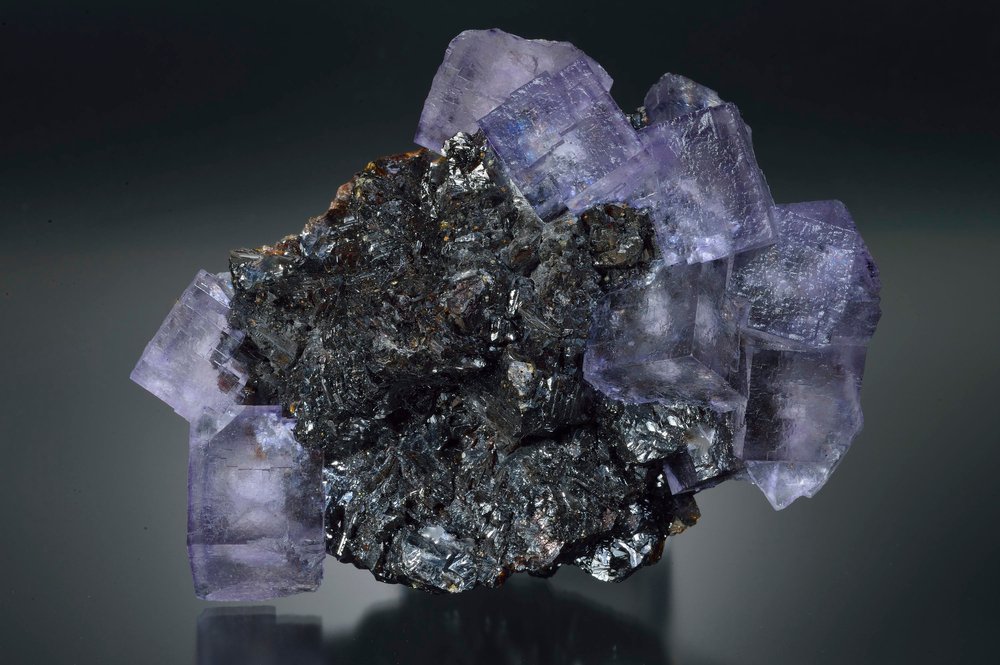
Sphalerite is a sulfide zinc ore, often found with other sulfide minerals. The reason that it occurs alongside such favorites as galena and pyrite have to do with ancient hydrothermal vents. The environment was rich in sulfur, creating these compounds. The majority of them are easy to extract, and they formed a vital part of our species’ early metallurgical exploration.
Zinc is a white metal that’s used in coinage and electronics. It’s also used to coat steel, creating galvanized steel that’s resistant to corrosion. Zinc has a low melting and boiling point, it’s one of the few metals that will boil under “normal” processes like welding and smelting. This creates metal fume fever, which is a pretty nasty result of acute exposure to zinc fumes.
South Dakota sphalerite is generally in the form of grey, cubic crystals. These are opaque and differentiated from the clear, red crystals that are found in some other locations. It’s most often found intermixed in pegmatites and granites rather than as larger formations on their own.
8. Carnelian
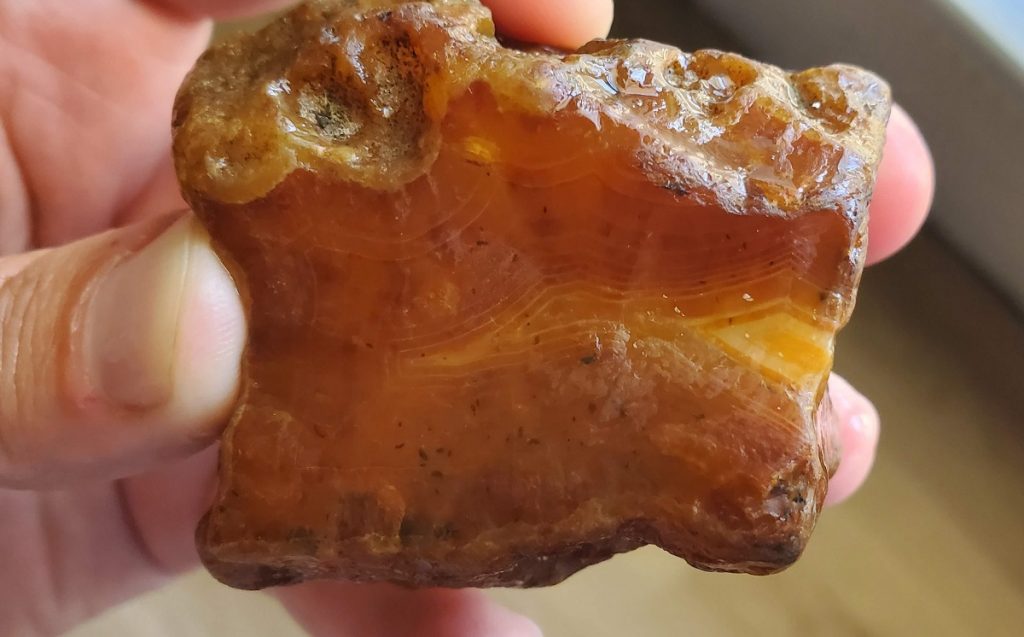
Carnelian is a classic, and it’s been cut and polished for as long as humans have been wearing jewelry. While I briefly touched upon it in a previous entry, the fact that gem-grade carnelian occurs in this state deserves its own entry. Carnelian is generally graded by color and clarity, the best examples being quite red and translucent. Like all forms of chalcedony, carnelian is an intergrowth of quartz and moganite.
Carnelian can occur as chunks of translucent material or as parts of an agate. The so-called carnelian agate is generally banded with orange and white, creating a warm color palette across the face of the stone.
The carnelian of South Dakota is some of the best, and it occurs in both forms. Carnelian agate can bear a striking resemblance to Fairburn agate but will always be entirely in the yellow-to-red spectrum. Other pieces are so fine as to resemble orange glass with no color zoning. The carnelian that emerges from this state is truly world-class.
South Dakota has a lot of carnelians, but the best pieces are found off the highway south of the tiny town of Scenic. There are a few turn-offs where you can park and gem-grade carnelian is a regular find in the area.
9. Quartz/Amethyst
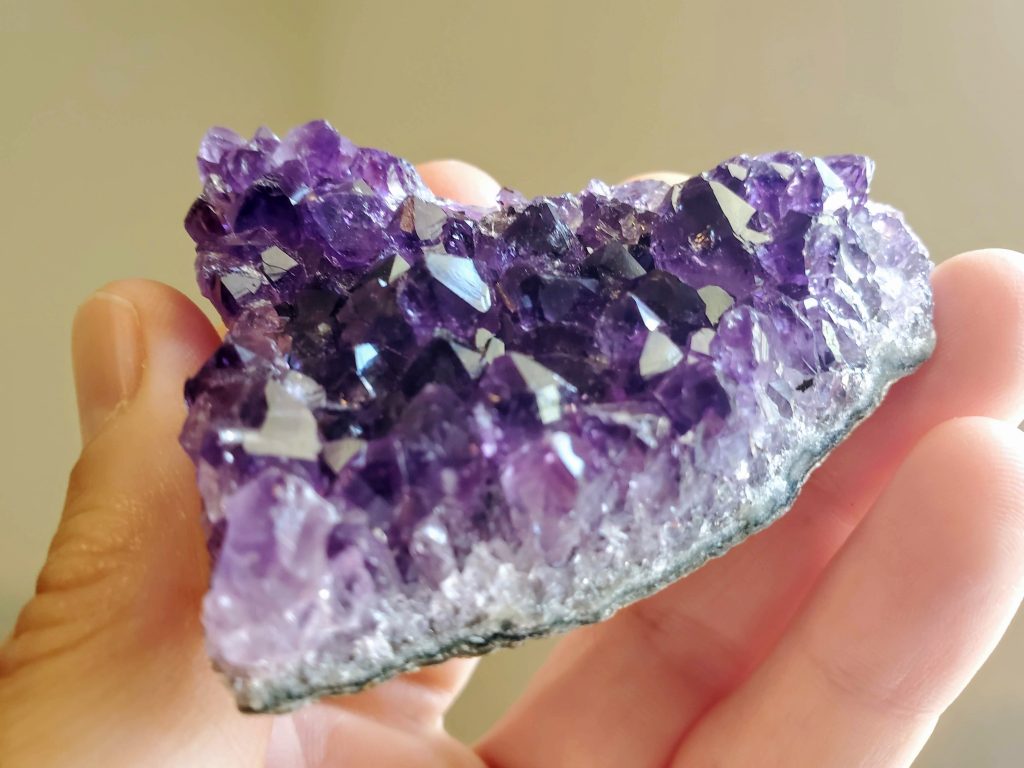
Quartz is the rock that introduced many of us to the hobby. When you’ve never seen a crystal before they’re a strange sight, a perfect hexagonal spear with a pyramid tip. You can find points, tumbles, clusters, and geodes across most of the world in various amounts. Even areas that don’t have it natively often have a few tumbles of milky quartz scattered in waterways and gravel pits.
Amethyst, on the other hand, is a purple form of quartz. It’s much sought-after, but more as a specimen these days than as a gemstone. Amethyst has been officially demoted to semi-precious gem after centuries of being as revered as ruby and sapphire, mainly owing to the large deposits found in the Americas. The largest are found in the basalt fields of Brazil, but it’s also found in many places across the US.
Both are found in South Dakota. Where amethyst is found you’ll often see regular quartz as well. The amethyst samples from South Dakota often display a blue tinge and lack clarity. While they may not make for beautiful gemstones, they make some incredible mineral samples for collectors.
The best of this amethyst is found in the Lead Mining District of Lawrence County. Be careful and make sure you’re legal, but it’s definitely an interesting find for those who put in the effort.
- Online rock and mineral club for collectors of all levels!
- Find community with like-minded rock and mineral enthusiasts.
- Monthly Giveaways!
- Free Access to Entire Digital Library of Products (annual memberships)


